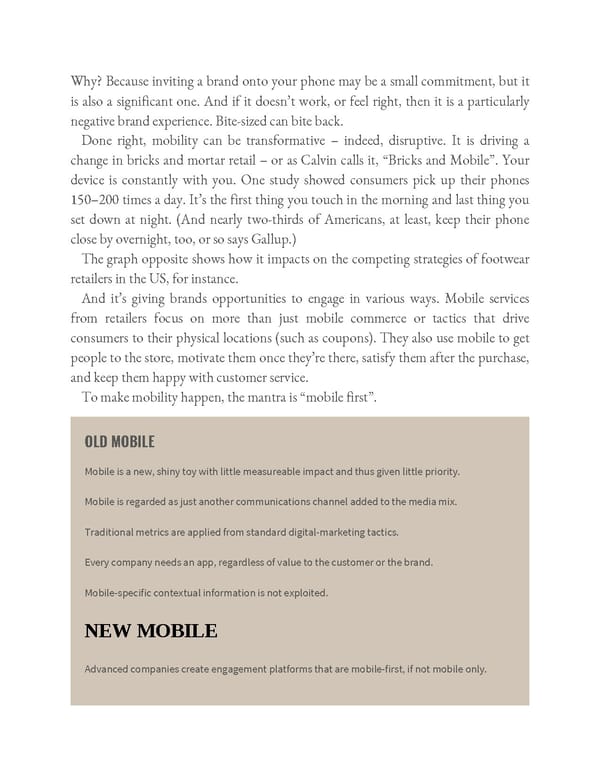Why? Because inviting a brand onto your phone may be a small commitment, but it is also a significant one. And if it doesn’t work, or feel right, then it is a particularly negative brand experience. Bite-sized can bite back. Done right, mobility can be transformative – indeed, disruptive. It is driving a change in bricks and mortar retail – or as Calvin calls it, “Bricks and Mobile”. Your device is constantly with you. One study showed consumers pick up their phones 150–200 times a day. It’s the first thing you touch in the morning and last thing you set down at night. (And nearly two-thirds of Americans, at least, keep their phone close by overnight, too, or so says Gallup.) The graph opposite shows how it impacts on the competing strategies of footwear retailers in the US, for instance. And it’s giving brands opportunities to engage in various ways. Mobile services from retailers focus on more than just mobile commerce or tactics that drive consumers to their physical locations (such as coupons). They also use mobile to get people to the store, motivate them once they’re there, satisfy them after the purchase, and keep them happy with customer service. To make mobility happen, the mantra is “mobile first”. OLD MOBILE Mobile is a new, shiny toy with little measureable impact and thus given little priority. Mobile is regarded as just another communications channel added to the media mix. Traditional metrics are applied from standard digital-marketing tactics. Every company needs an app, regardless of value to the customer or the brand. Mobile-specific contextual information is not exploited. NEW MOBILE Advanced companies create engagement platforms that are mobile-first, if not mobile only.
 Ogilvy on Advertising in the Digital Age Page 300 Page 302
Ogilvy on Advertising in the Digital Age Page 300 Page 302